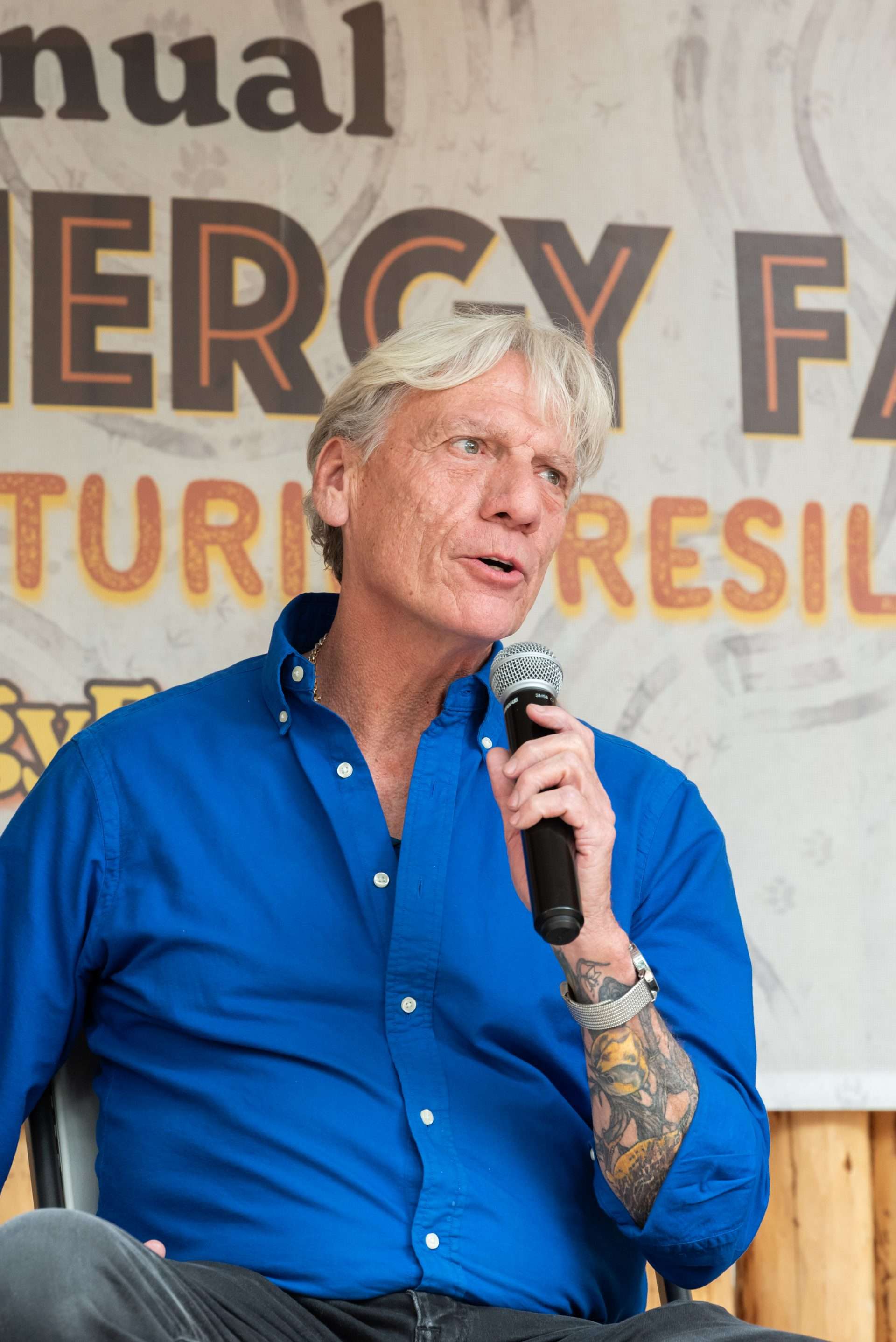By Tricia Toney
After an extended downpour and hail in downtown Crestone, as a rainbow formed over the peaks, about 40 people gathered under tents, with others viewing via livestream to hear about something brighter: the future of the San Luis Valley economy.
A panel of local leaders, brought together by Ameille Warner, Executive Director of Saguache County Sustainable Environment and Economic Development (ScSEED), took on a broad range of topics shaping that future, including: public transit, tourism and housing.
The panel included:
• Ame Warner – Executive Director, ScSEED; Owner, Dandelion Creative Services; Marketing Consultant, Saguache County Tourism Council; Saguache Town Trustee
• Barry VanSant – ScSEED Board; Mtn Valley Transit Board; TPR Board Member; Retired Business Developer; AirBnB Owner
• Theo Boudreaux – Manager, Joyful Journey Hot Springs; Chair, Saguache County Tourism Council; Vice Chair, SLV Tourism Association
• Cillian Liam Barrett – Architectural Technician & Principal, Hearth Design Build LLC; Habitat for Humanity Gunnison Valley
• Mary Anne Sheeran – Crestone Resident, Advocate for Alternative Economies
• Wendy Stewart Martinez – Rural Opportunity Representative, Southwest/Eastern Plains Regions
• Natalie Montecino – Executive Director, Climate Democracy Initiative; international experience with rural economic development in Japan and Canada
Looking beyond the challenges
While it’s easy to dwell on obstacles, the panelists focused on opportunities, resources and progress already made through local innovation and perseverance.
Tourism, Boudreaux noted, is both a lifeline and a balancing act. “People in the valley value their privacy highly,” he said. “But we need tourism to power our economy.” The tourism industry is one of the top employers in the Valley. The Valley’s three hot springs are not only its largest employers but also among the largest sales tax contributors.
Housing, meanwhile, touches every part of the economy. Residents need places to live and construction creates jobs.
Building new possibilities
Barrett believes Saguache County could become a hub for producing high-quality, energy-efficient prefab homes. Unlike the cheaply built modular houses of the past, new technologies make it possible to construct durable, attractive components locally and assemble them on-site. Warner and Barrett are already exploring partnerships to bring such manufacturing to the area.
Transit is about more than bus routes, Van Sant emphasized. Reliable transportation connects people to jobs, supports employers and improves quality of life. Even crosswalks and sidewalks, he said, create safer, more welcoming conditions for both residents and businesses.
Alternative economics
Sheeran touched on the alternative economy in the valley. People here trade and barter. Sheeran said she has done sewing work in exchange for fresh produce. She made meals for friends of her son who worked on the construction of her straw bale house. This alternative economy can take the form of farm shares, community gardens, bartering and work exchanges, and is a hallmark of many who have nontraditional employment.
Learning from elsewhere
Martinez and Montecino underscored the importance of collaboration. Economic development, they said, only works when communities engage together in shaping solutions.
Warner invited Montecino to share lessons from abroad—specifically from rural Japan in the early 2000s, when millions of residents abandoned their villages, leaving behind shuttered businesses and crumbling infrastructure. By engaging youth to reimagine their towns — with healthier food options, vibrant gathering places and eco-tourism initiatives—some communities found new life and avoided extinction.
The San Luis Valley, Montecino suggested, is in its own period of transition. The marijuana boom has faded. Historic farmland is being retired due to water and soil depletion. What can be done to retain the youth and attract new residents? Like Japan’s rural villages, the valley faces big questions about identity and sustainability.
A network of efforts
These panelists represent a broad spectrum of expertise, each working in their own way towards a sustainable economic future for the San Luis Valley.
Together, they are building a network aimed at strengthening the valley’s economic, social and environmental health.
For more information
• https://scseedco.org
• https://mystic-colorado.com
• https://climatedemocracyinitiative.org
• https://mountainvalleytransit.com
Find this discussion on video at www.crestoneenergyfair.org

